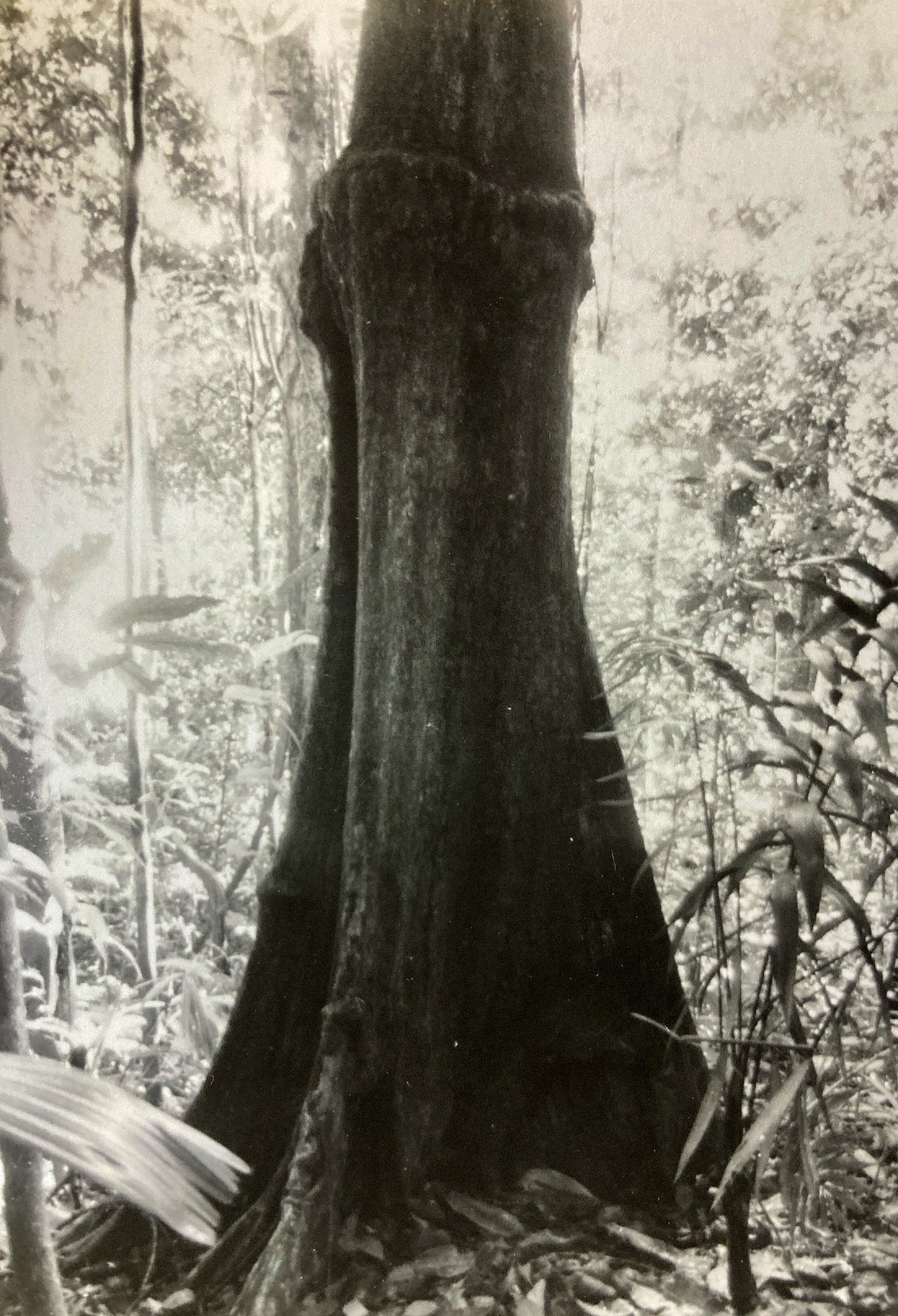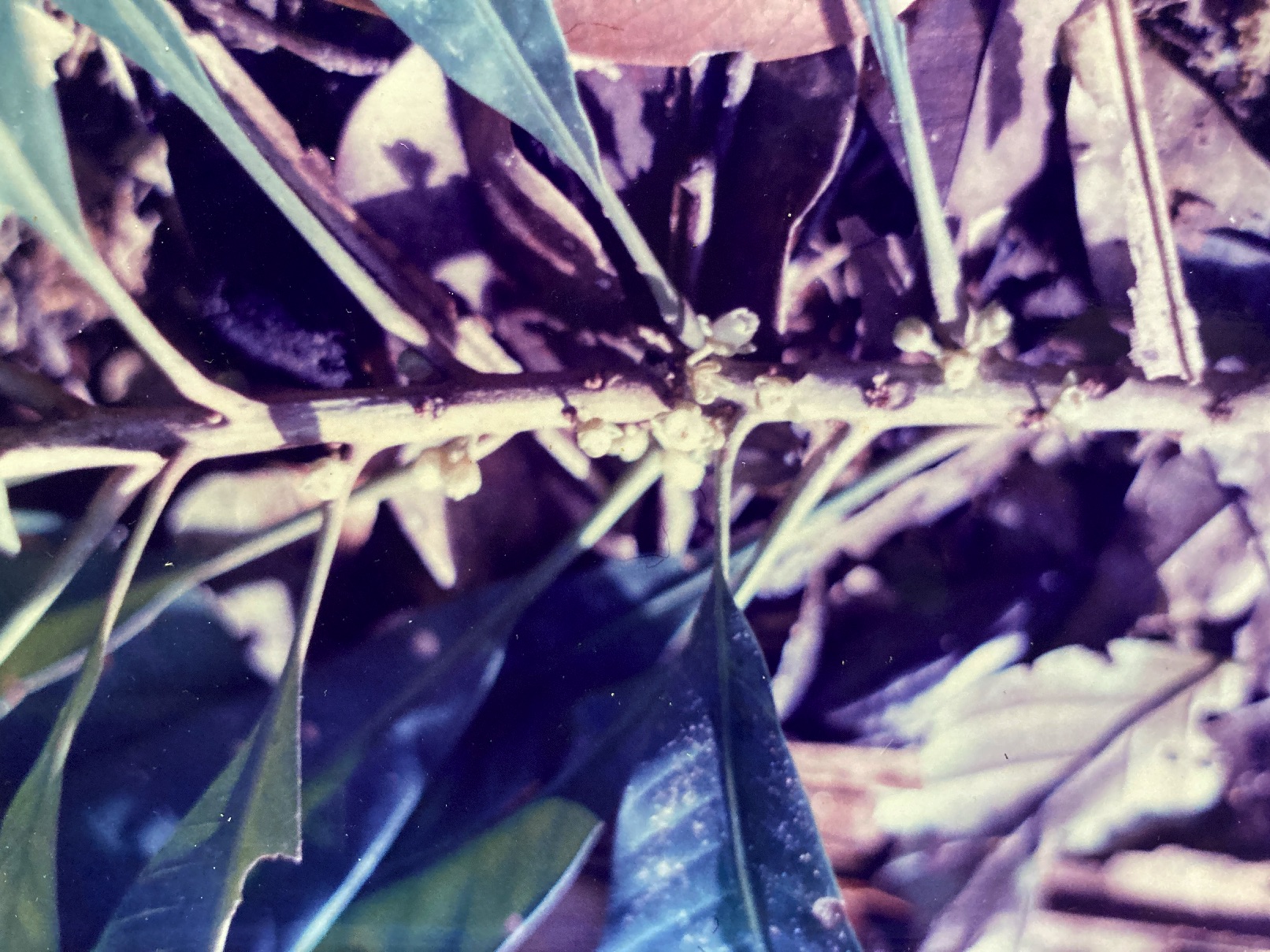Pouteria glomerata (Miq.) Radlk.
Sapotaceae
ZAPOTILLO
Occasional evergreen understory tree (10-15m) found widely but thinly distributed throughout Manuel Antonio National Park’s primary forests. P. glomerata is recognizable for its long, darkly-veined, leaves that are arranged in whorl-like clusters around branch tips as well as for its large, sessile, Brussels sprout-like fruits.
Description: P. glomerata is a tree of small to moderate size, with a trunk that usually does not exceed 50 cm in diameter. The base of this very irregular, bending, and somewhat fluted bole is flanked by tall and steep buttress roots. Often, the trunk sports a characteristic, node-like swelling several meters above the ground. The brown, thin bark is textured with fine vertical cracks and it exudes thick, white latex sap when injured – as do the twigs and leaves. Branching occurs along the upper half of the bole and these long, flexible limbs form a moderately dense, rounded canopy of a single layer. The large leaves (33 cm by 8 cm) are simple, alternate, smooth, and entire. Clustered around the tips of the thick twigs (the rest of the branches are bare), they appear to be arranged in whorls. Blades are narrowly elliptical in shape and slowly taper to points at both ends. Their extremes are marked by well developed drip tips and long petioles (2 cm). As viewed from the ground beneath them, the leaves are darkly ribbed by prominent, pinnately-patterned veins. Tufts of new foliage emerge from the ends of the branches in November and December, as 30-50% of the pre-existing leaf cover is replaced.
Flowers grow in small clusters from leaf axils – mostly along the bare sections of the branches behind the current foliage. Blossoms are usually so abundant that they completely sheath the limbs in white. Each flower (5 mm) possesses a green calyx made of four, scale-like sepals perched on a 3 mm pedestal; a white corolla formed from four fused petals; four short stamens attached to, and inside the corolla; and a single, central pistil. Browned and dry, spent flowers persist on tree limbs for several months. P. glomerata‘s annual flowering period is often characterized by a series of punctuated bursts of activity that occur mainly in January and February (though sometimes beginning as early as December). For three months following the disappearance of the last flowers, the fertility cycle seems to stall.
Finally, in May, fruits begin to develop as small, branch-hugging nodules. Slow growth then continues through September, at which time the pale-green, rounded, and sessile structures appear more like burls or fungal infections than actual fruits. Varying in size – depending upon whether they house one, two or three seeds – they range from 3.5 to 6 cm in diameter. When mature, single-seeded fruits are shaped and colored like Brussels sprouts. Mottled yellow and green, they are glossy and hemispherical distally but narrower and wrinkled (or puckered) next to the branch. Multiple fruits resemble two or three of the former fused together. Their thick, outer rind is woody and it covers an ovoid, longitudinally scared seed (2.5 cm). The annual harvests are consistently timed, though relatively small in size, and occur as the green fruits become partially yellow in October and early November.
Similar Species: Among Manuel Antonio’s Sapotaceaes, P. glomerata is typical in its leaf arrangement, though atypical in its large leaf size and prominent venation. More distinctively, this tree has the second most irregular trunk of any Sapotaceae in the park (only the bole of P. subrotata is more channeled, and this is a smaller tree with much rounder leaves). P. glomerata fruits are equally unique, and these are present from May to November. Even after harvests, many old, brown fruits can still be found, tenaciously clinging to the branches.
Natural History: P. glomerata flowers are pollinated by bees and other insects. Its fruits are eaten by arboreal mammals – especially monkeys. These animals often remove the fruits from the branches and discard them, uneaten – making them available to their ground-dwelling counterparts. Almost all of Manuel Antonio’s Sapotaceaes flower during the dry season, sometime between December and April. This behavior may confer at least two advantages to the family. First, blossoms that open during the dry season tend to be longer lived, for they are less subject to the mechanical damage caused by heavy rains and fungal growth (fungi are particularly active during the damp, rainy season months). Also, dry season fertility ensures that fruit maturation and harvest will occur during the heart of the wet season. This allows the seeds to germinate and the resulting seedlings to get established while growing conditions are favorable. The Sapotaceae habit of locating its small flowers on bare branch segments, behind the current foliage, may be an adaptation that increases the visibility of its blossoms. Tropical, deciduous trees pursue much the same strategy when they flower after their leaves are completely shed (e.g. Tabebuia rosea), at the height of the dry season.
Uses: P. glomerata fruits are edible and its timber is used in Mexico.
Distribution: In Manuel Antonio National Park (MANP), P. glomerata is found in primary forests like those of Punta Catedral, where it is particularly abundant. It ranges from Mexico through Paraguay and Argentina.




